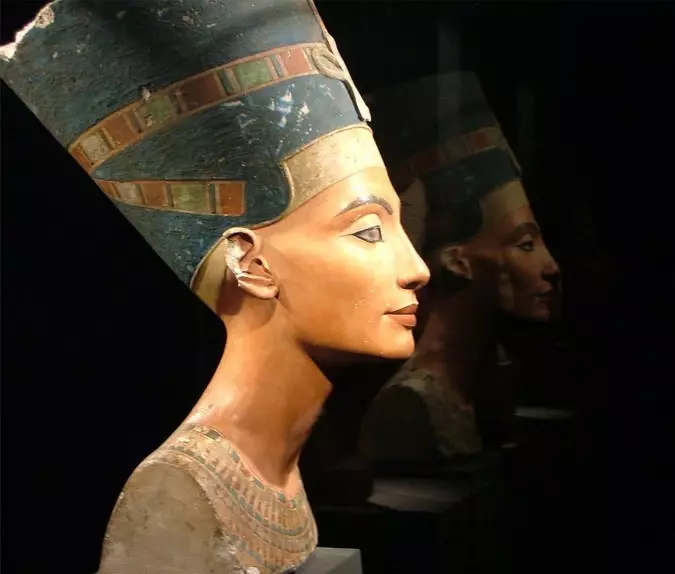
At different times and from different peoples, an idea of female beauty and fashion was their own, and over time, depending on a number of factors. In this review, the anthology of this issue from the time of the Middle Ages and before the beginning of the 20th century. Just the diva is given, as everything is dynamically changing.
Middle Ages
In the Middle Ages, women's beauty was an object of fantasy, both for laity and religious people. Earth beauty was considered sinful. Apply makeup - adultery, and embellish your body - it means to distort the idea of God, because people are created according to his image, and the devil always hides behind harmonious faces.
In the medical literature of the time you can find links to cosmetics only in the form of recipes with formulas of ointments for skin and hair.
Perfect beauty is the beauty of youth. The body of the girl symbolizes the purity and whiteness of innocence. The woman is not so attractive, and the old woman is considered a symbol of ugliness. The face is the place and the abode of beauty.
The woman should have a harmonious physique, not thin and not complete, the hair is removed, but the most important thing that was considered beautiful - clean and high forehead. Hairiness is considered a shame (except for curtains). That is why women shaved foreheads, headings, eyebrows and many other parts of the body scrapers from ivory, paste or pimpa.
The body should have obeyed very special aesthetic criteria. Wide shoulders, small chest, convex belly and narrow hips - the perfect body of a woman at this time. Blonde with a rounded belly - an archetype of beauty in the Middle Ages.
Renaissance
In the era of the revival, artists and intellectuals re-open antiquity. Long despised beauty and nudity of the body become inspiration sources for artists and poets. Under the influence of the aesthetic canons of ancient Greece, Venetian curtisani becomes ideal.
Renaissance reserves the antiquity, which he considers the golden age. Artists of the Renaissance are trying to find the perfect proportions. Venus Botticelli has everything related to the ideal of that time: white leather without the slightest hair is an archetype of marble beauty. It is more deity with a completely idealized body than a woman. Many elements do not take into account the rules of the anatomy: the neck is strangely long, the shoulders are too lowered, and the left hand is strangely attached to the rest of the body. Artists of that time transformed reality to approach their concepts of female ideal.
Venus at the same time illustrates the perfection of a woman's image. She is dense, and heavenly. Smooth complexion, chubby hips and chest, overweight are signs of beauty, wealth and good health.
Women's hips were to be wide, no wonder the silhouette of the Renaissance woman is compared with the sandy clock.
From the XV to the XVII century
During this period, the whole body is structured, the bust is naked to extremes. Women wear corsets to look thinner and emphasize the chest. Hands should be plump. This passion for roundedness took place from the fact that at that time the peasants died from hunger, because they were poor. To be thick meant the opportunity to eat well and have money to buy food. Only a noble and rich bourgeois could afford the luxury of this beauty.
The corset is designed to simulate the bust in accordance with the changing aesthetic criteria over the centuries. Clothing hard and dense. On the one hand, it serves to simulate silhouette, and on the other to maintain the body. The corset becomes an indispensable element of a female toilet to follow fashion on the waist of the wasps. A healthy blush was a sign of vulgarity, in a pallor fashion. The waist should be fine and smooth without folds or bulges. To get this perfect size, women dragged themselves corsets from a whale wast, the waist could reach 33 cm.
Mystery of beauty: In the seventeenth century, women did not wash, and covered the skin with layers of makeup and rubbed aromatic oils.
From 18 to 19th century
The Epoch of Enlightenment is the time of the revolution of ideas that affect all areas, including beauty. After the excesses of the seventeenth century (wooden structures of clothing making hips significantly wider shoulders and huge wigs) returned fashion for naturalness. Cosmetics are significantly less used. An ideal woman of that time should be a porcelain face with natural and soft lips. Crispy hair give the way of lightness and airiness, women no longer seek static beauty.
Beauty Secret: To achieve fashionable porcelain leather whiteness, it was used to bleel on the basis of chalk, egg protein and vinegar.
20s
During World War I, women learned to live without men. At the end of this difficult period, they have only one desire: to work, participate in the organization of society and political life, receive diplomas, have fun, dance, live! Women feel the need to take care of their bodies, be coquetty and beautiful. This desire allows you to free the body from long dresses and corsets.
Women increasingly declare themselves, expose themselves to the whole world. They wear shorter dresses and skirts, even risk wearing pants. Some adventurers cut hair. In France, at that time, Gabriel Chanel will become the founder of a boyish style.
